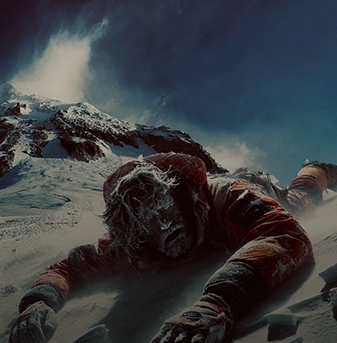
- admin
- June 24, 2025
Table of Contents
At the turn of the twentieth century, as explorers hoisted flags at the North and South Poles, one hurdle remained: Everest, the fabled “Third Pole,” its icy heights unclaimed and its slopes a gauntlet few dared to face. What motivated individuals like George Mallory and Andrew “Sandy” Irvine to risk—and eventually sacrifice—their lives on its slopes?
Their 1924 expedition is a tribute to the indomitable human spirit in the face of insurmountable circumstances, and it continues to inspire climbers nearly a century later.
A Life Defined by Climbing
George Mallory was made for mountains. From scaling draperies and rooftops as a boy in Cheshire to winning a mathematics scholarship and excelling in gymnastics at Winchester College, Mallory combined intellectual curiosity with fearless determination. He described climbing’s lure succinctly: “One must conquer, achieve, get to the top; one must know the end to be convinced that one can win the end.” This credo carried him through the 1921 reconnaissance and the near-fatal 1922 summit attempt, shaping a man for whom Everest was more than a peak—it was a calling.
The Young Engineer’s Resolve
By contrast, Andrew Irvine was the expedition’s “experiment”—a 22-year-old engineer whose mechanical genius and athletic strength outweighed his lack of high-altitude experience. His childhood fascination with tinkering led him to design gyroscopic gears at 14; at Oxford, he juggled chemistry, rowing triumphs, and mountaineering, earning respect for his calm, methodical problem-solving. Irvine’s modifications to the oxygen apparatus, though not officially adopted, underscored his commitment to overcoming Everest’s physiological challenges.
Learning from Failure
The 1921 reconnaissance revealed the North Col route but underscored Everest’s perils: unstable ice, roaring storms, and yawning crevasses. In 1922, Mallory’s leadership sustained a team through severe weather and debates over supplemental oxygen, only to see seven Sherpas perish in an avalanche. This tragedy seared home the mountain’s lethal unpredictability. Yet these setbacks laid the groundwork: improved logistical planning, stricter safety protocols, and a growing belief that Everest’s summit was within reach.
Assembling the Dream Team
By early 1924, Mallory wrestled with the duty to family and country, torn between domestic contentment and the call of the summit. After months of deliberation and counsel from his wife Ruth, he committed to another push, framing Everest not as “useful” but as the struggle of life itself—”upward and forever upward,” yielding “sheer joy.” Alongside him stood Irvine, Brigadier-General Bruce, Edward Norton, and other luminaries, each bound by a shared belief that human ingenuity and resolve could conquer the unconquerable.
Into the Death Zone
On June 8, 1924, Mallory and Irvine departed Camp VI for their final ascent. Norton’s earlier oxygen-free attempt faltered below the summit, and frostbite had nearly ended Somervell’s climb, yet Mallory’s experience and Irvine’s technical skill offered hope. As fellow climbers watched from below, the duo vanished into swirling clouds, their silhouettes last glimpsed by Noel Odell near a rock step—a sighting that fuels debate to this day.
Disappearance and Mystery
Mallory’s body was found in 1999 at 27,000 feet, a silent testament to a fall and the harshness of the death zone. Irvine’s remains, however, eluded discovery until a fragment surfaced in 2024 on the Central Rongbuk Glacier, carried down by ice over decades. The Kodak camera they hoped to read remains missing—without it, the question of whether they stood atop the world’s roof remains unanswered, preserving a mystery that captures imaginations.
Enduring Lessons
Mallory and Irvine’s narrative defies climbing conventions. It emphasizes the combination of human characteristics—vision, courage, solidarity, and innovation—that propel us toward seemingly unachievable goals. Their unwavering determination in the face of life-threatening situations reflects the tenacity of modern climbers, who endure avalanches, altitude sickness, and changeable weather on today’s Everest. Each successful summit, from Hillary and Norgay in 1953 to the hundreds that follow each year, is built on the shoulders of those early trailblazers, whose energy can be heard in every strained breath at 29,000 feet.
The Human Spirit Today
In a world where technology often whispers that anything is possible, Mallory and Irvine remind us that progress is measured not just in gadgets but in human will. Their legacy thrums through every expedition that tests our limits—scientists studying high-altitude physiology, adventurers scaling new routes, and ordinary people tackling personal summits. The indomitable spirit exhibited on Everest in 1924 continues to inspire us to face our challenges, to embrace risk for the sake of growth, and to press ever upward, even when the path is uncertain.
In the end, the question of their summit success matters less than the testament of their journey. Mallory and Irvine’s ascent—and disappearance—reveal a timeless truth: that the human spirit, when confronted with disaster, refuses to bend. It survives on hope, ingenuity, and an unshakable belief that, against all odds, we can reach heights beyond our wildest dreams.